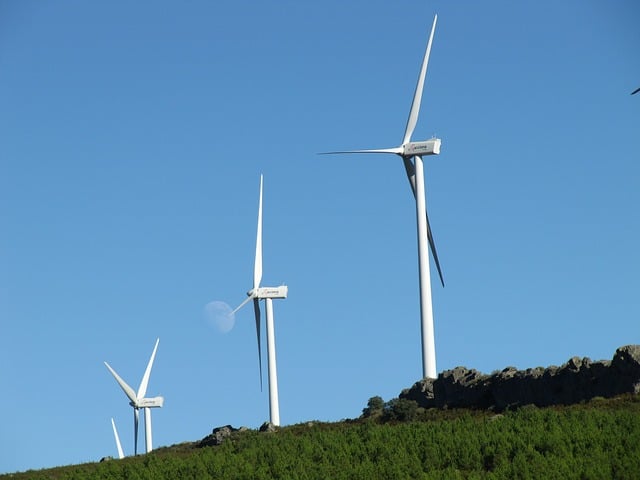
The wind turbine transforms wind energy into electricity
A wind turbine is a device that, using bladed rotors , produces electrical energy from wind energy . The concept is formed with the compositional element aero- (which refers to “air” ) and the term generator (a machine that generates energy or force).
energy transformation
Before moving forward with the definition of a wind turbine, it is important to clarify some ideas. Wind energy is obtained from the wind , since the kinetic energy associated with the movement of air masses is used. Electrical energy , meanwhile, is the energy resulting from the potential difference that exists between two points .
Returning to the notion of a wind turbine, this type of device manages to convert wind energy into electrical energy. For this, it uses bladed rotors : that is, a rotating system that, when influenced by the wind , enables the movement of the blades.
When the wind turbine blades move, kinetic energy comes into action and is transformed into mechanical energy and then, through an alternator , into electrical energy. Expressed another way: the kinetic energy of the moving air (wind energy) provides mechanical energy to the blade rotors and, thanks to a transmission mechanism, the alternator is rotated, which produces electrical energy from the mechanical energy. rotational.
Types of wind turbines
There are horizontal axis wind turbines and vertical axis wind turbines . It is common for wind turbines to be grouped together in wind farms and for the electrical energy they produce to be supplied to the electrical grid. It is worth mentioning that its operation does not require combustion that causes greenhouse gases.
horizontal axis
In these wind turbines, the axis of rotation is in a direction parallel to the base. It is the most used because it is more efficient and reliable than the vertical axis, in addition to having greater versatility in terms of power. Its fundamental parts are the following:
* rotor : these are the blades , which are generally built with composite materials and their design has the objective of transforming the energy of the movement produced by the wind. The diameter of today's models can reach 80 meters and generate powers that are counted in megawatts . Its rotation speed is usually limited by that of the blade tip, for which limitation acoustic criteria are used;
* nacelle : it is also called a nacelle and is used to house the electrical and mechanical elements of the device, including the generator, the multiplier and the control cabinets;
* multiplier : not all models have it. It serves to transform the low rotor speed into high speed;
* generator : it is the part that is responsible for transforming energy into electricity.
vertical axis
Beyond its orientation with respect to the ground, this type of wind turbine differs from the previous one by presenting certain advantages and disadvantages. Among the first we have the following:
* They can be located at a closer distance from each other, because they do not slow down the air as those with a horizontal axis do;
* They do not require a mechanism to orient them according to the direction of the wind, since their rotors are omnidirectional;
* They can also be installed at a lower distance from the ground, because they do not need the wind to blow at high speed to work. This makes its maintenance less complicated.

Here we see the rotor of the wind turbine and its three blades
Regarding its disadvantages, we can mention:
* its lower height leads to a waste of some air currents ;
* They are less efficient than horizontal axis wind turbines;
* the same surface requires a greater investment in materials;
* They do not have automatic start, but must be connected to the network;
* They are less stable and reliable than those with a horizontal axis. For example, their blades are more likely to bend or break if the wind blows too hard.
